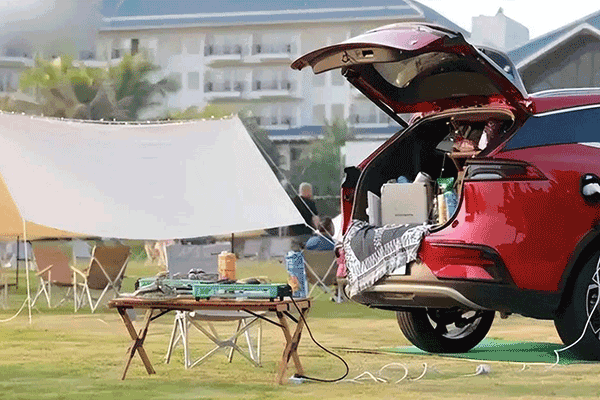The new wave set off by electric vehicles has not only not receded amidst skepticism, but more and more new technologies and new thinking based on pure electric cars are driving the pace of innovation. Future fast charging, automotive internet, and intelligent charging are all likely to help pure electric vehicles continue to expand into new application scenarios. On the other hand, the two-way charging technology will further promote the transition of cars to clean energy while redefining the functions and application scenarios of electric vehicles.

As freezing winds blow across his construction site in northern China every morning, Liu Jianhong gathers his workers for hot tea. Liu, whose business in Shaanxi province often operates beyond the reach of power grids, plugs a hairdryer-like charger into his hybrid electric car, a sport utility vehicle from Chinese automaker BYD Co. The other end of the charger connects to his kettle. A few minutes later, it lets out a whistle, and tea time begins.
“With the help of the electric car, we can drink tea whenever and wherever we want. My workers are over the moon,” says Liu, 57, who used to schlep hot water in a too-small thermos from a nearby village each day, forcing his employees to take turns enjoying tea breaks. Liu’s EV had come to the rescue before like when he needed to charge a power drill at a newly-built home, he hadn’t realized it wasn’t connected to a utility. “If it were not for my car, I would have wasted all the time and energy going there,” he says.
With the popularity of electric cars, “two-way charging” has become one of the favorite life tricks of many electric car owners. It’s not just a cleaner, cheaper way to get around; it’s also a power source for everyday life and emergencies. In China, where more than a fifth of all new cars sold this year are electric, more and more people are experiencing cars that double as mobile power sources. Electric vehicle manufacturers call their products “batteries on wheels.”
Two-way, or bidirectional, charging can be done by loading an EV with power outlets, known as vehicle-to-load (V2L). Automakers that include Japan’s Mitsubishi Motors, China’s BYD, and South Korea’s Hyundai also offer EVs that power homes and businesses — known as vehicle-to-home charging, or V2H — and even send power back to the grid (vehicle-to-grid charging, or V2G).
Have you ever thought of a scenario like this? When you park it at home, it can automatically charge the car at a cheaper rate when the grid power is low peak. And when the city grid is short of power, the abundant power in your electric vehicle can be fed back to the grid and earn a difference in the price of the returned energy. At the very least, it will make your expenses more balanced. When your home appliances encounter an unexpected power outage, your electric car will become the power output of all the devices in your home. Then the electric vehicle is no longer only related to travel. It will be integrated with your family and become a vital member; in the future, all the electric cars in the whole society will be a molecule of the city’s energy storage, and it will change the way of energy storage.
According to statistics, the future use of bi-directional chargers will enable pure electric vehicle owners to save 60% of their car charging costs. It will reduce the cost of service and allow electric vehicles to go beyond the concept of a means of travel and become part of the future of urban mobile power. For users, electric vehicles will significantly reduce or possibly even eliminate their dependence on the city grid.














